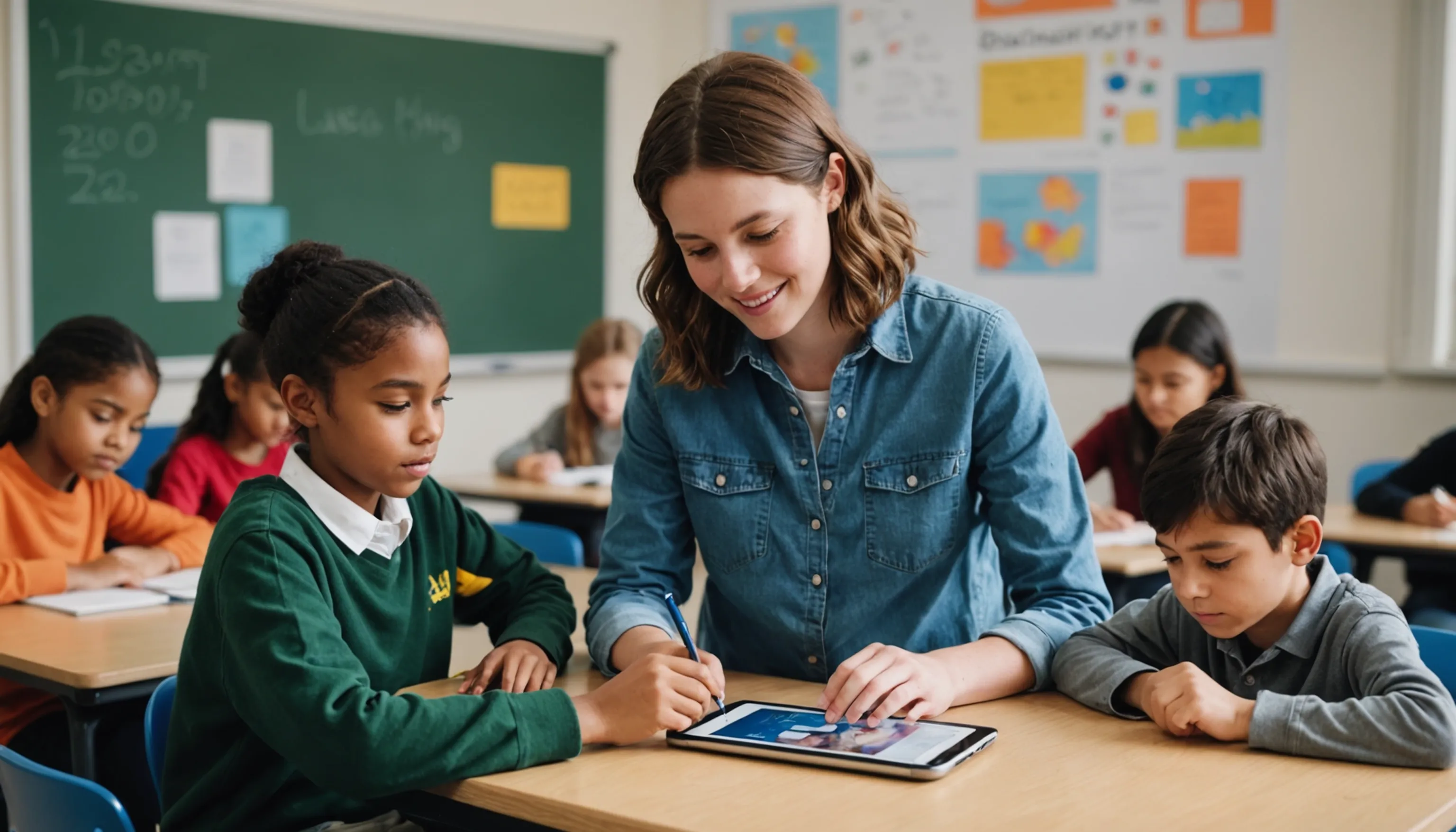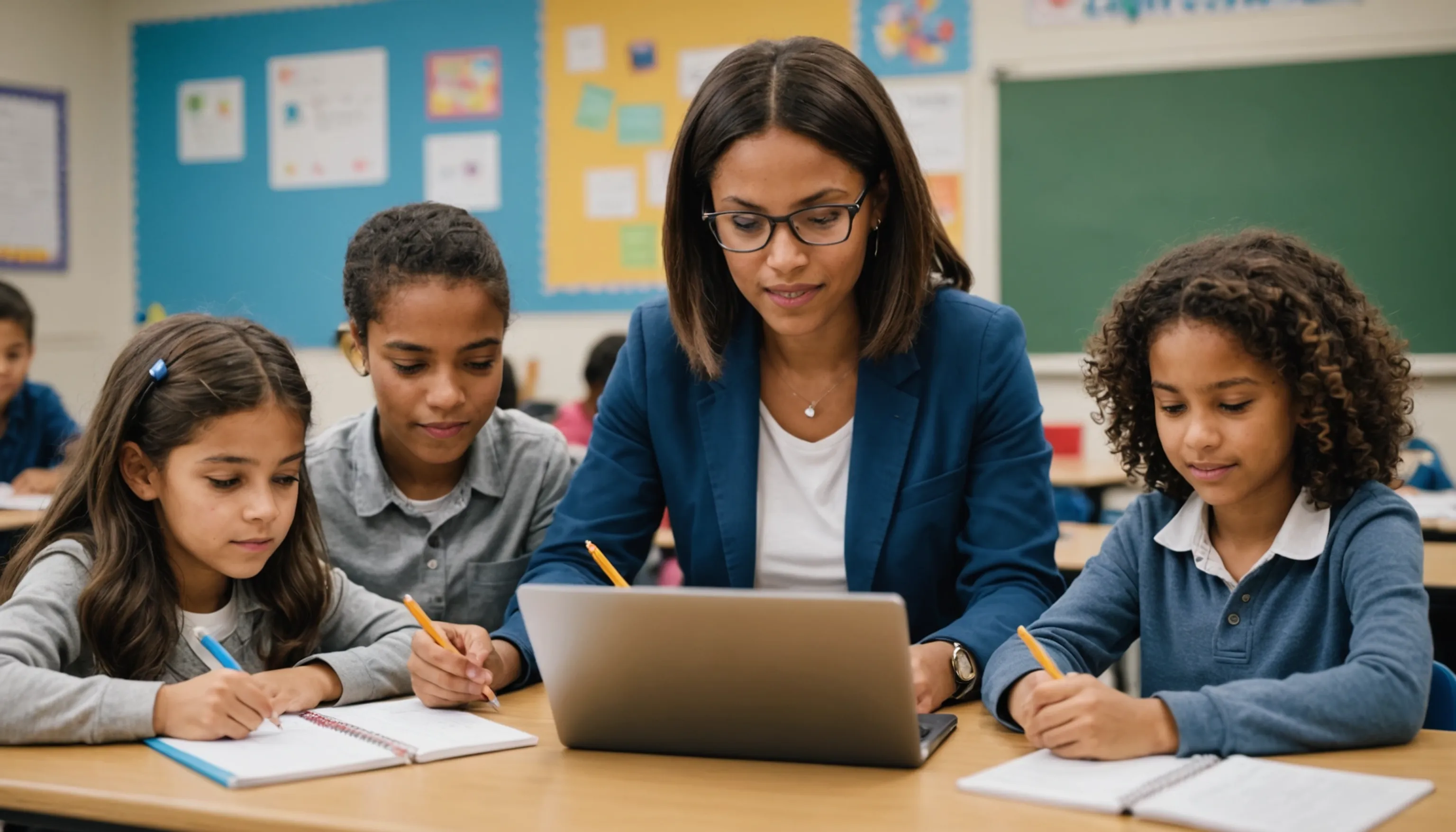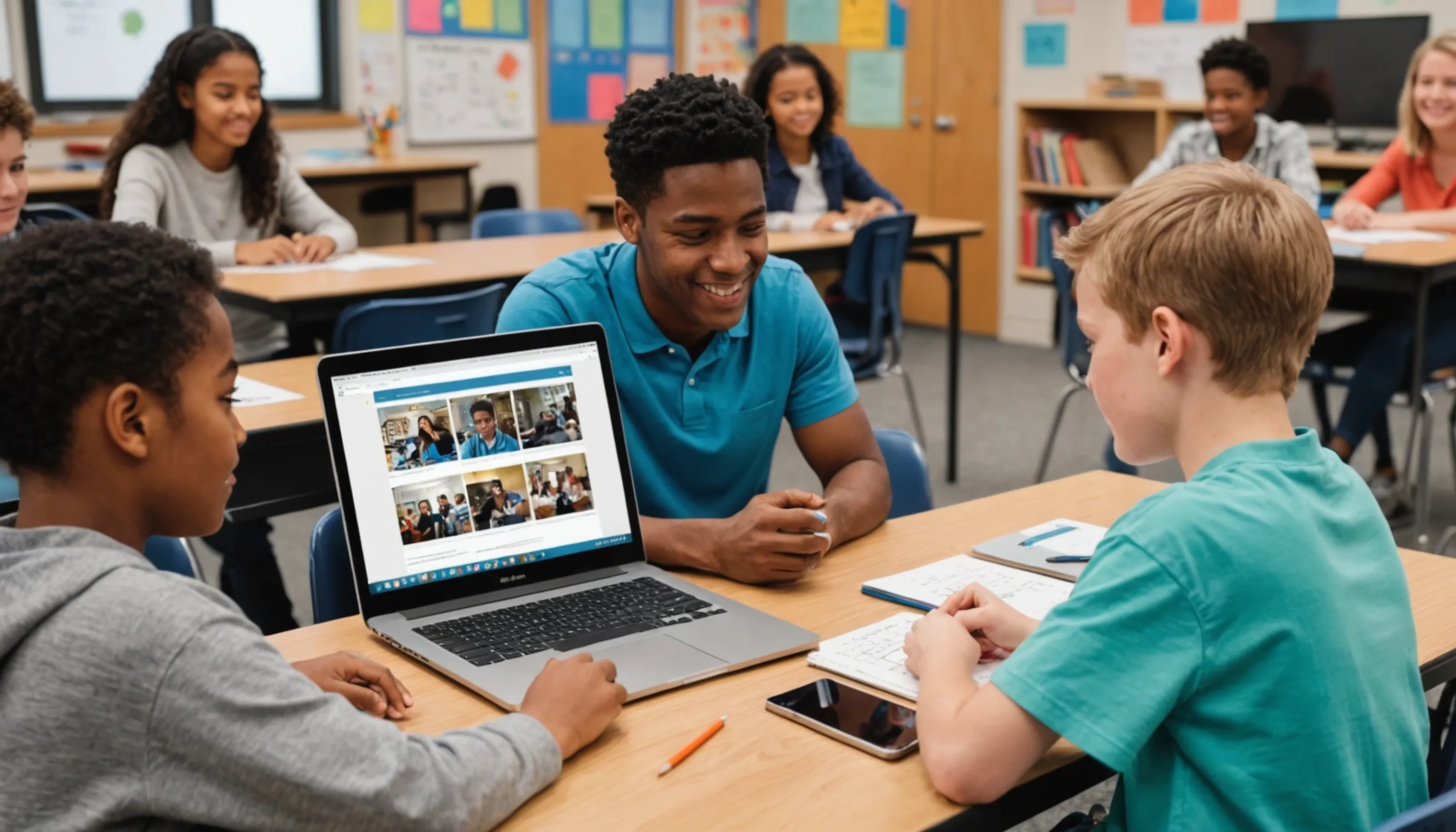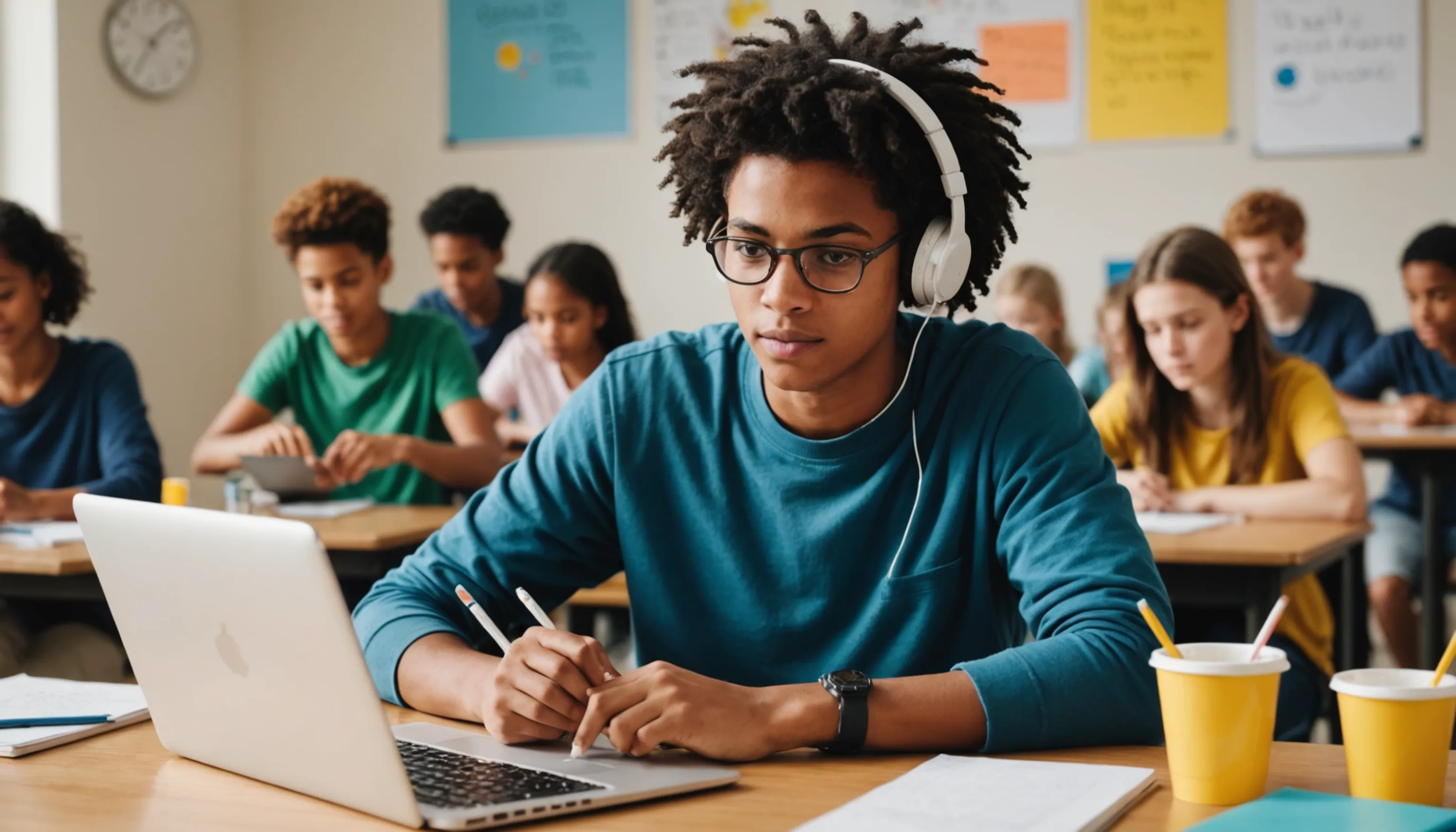Promoting Productive Screen Time in Education
 HvWHenry van Wagenberg
HvWHenry van Wagenberg
Promoting Productive Screen Time in Education
Promoting productive screen time in education is essential for maximizing the benefits of technology while minimizing distractions. With teenagers increasingly engaged with digital devices, it's crucial to guide their screen usage towards constructive activities. This involves educating both parents and teachers about the potential of screens as learning tools rather than mere entertainment.
By fostering an environment that encourages the use of screens for educational purposes, we can help teenagers develop critical thinking skills, creativity, and collaboration. This approach not only enhances their learning experience but also prepares them for a technology-driven future.
Understanding Screen Time in Education
Understanding screen time in education is crucial for parents and teachers alike. As technology becomes increasingly integrated into the learning environment, it's important to recognize both the benefits and challenges associated with digital device usage. Screen time encompasses all activities done on digital devices, including educational content, social interaction, and entertainment.
Research indicates that when used effectively, screens can enhance learning experiences. For instance, educational videos and interactive apps can provide engaging ways for students to grasp complex subjects. However, it's essential to balance screen time with other forms of learning, such as hands-on activities and face-to-face interactions.
According to the American Academy of Pediatrics, children aged 13-18 should have a consistent limit on recreational screen time, ideally no more than two hours per day. This guideline emphasizes the need for a structured approach to screen use, ensuring that educational activities take precedence over passive consumption.
Moreover, understanding the different types of screen time is vital. Not all screen time is created equal; educational apps and online learning platforms can be productive, while excessive gaming or social media can detract from academic focus. Encouraging students to engage in meaningful screen activities fosters a productive learning environment.
Ultimately, understanding screen time in education requires ongoing dialogue between parents, teachers, and students to establish healthy habits and ensure that technology serves as a tool for learning rather than a distraction.
The Importance of Balanced Screen Time
The importance of balanced screen time in education cannot be overstated. As screens become an integral part of the learning process, it's crucial to strike a balance between their use and other activities. Excessive screen time can lead to negative outcomes, such as decreased attention spans, reduced physical activity, and diminished social interactions.
Research shows that teenagers who engage in a balanced approach to screen time experience better academic performance. The American Academy of Pediatrics suggests that screen time should be purpose-driven, prioritizing educational content while limiting recreational use. This means allocating time for educational apps, online courses, and interactive learning platforms, while also ensuring that students engage in offline activities.
Moreover, balancing screen time helps in developing critical skills. For instance, encouraging face-to-face communication and hands-on activities fosters collaboration and problem-solving abilities. It also allows teenagers to develop their emotional intelligence, as they learn to navigate social cues and build relationships.
Additionally, it’s important for parents and teachers to model balanced screen time behaviors. By demonstrating healthy usage of screens themselves, adults can instill good habits in teenagers. This includes setting aside designated times for screen activities, ensuring that some of those hours are dedicated to enriching educational content.
Ultimately, a balanced approach to screen time not only enhances learning but also promotes overall well-being, preparing teenagers for a future where technology and interpersonal skills go hand in hand.

Strategies for Productive Screen Time
Implementing effective strategies for productive screen time is essential for maximizing educational benefits. Start by setting clear objectives for screen use, ensuring that activities align with learning goals. Incorporate engaging and interactive educational apps that promote critical thinking and creativity. Encourage active participation by asking students to discuss what they learn and share insights with peers.
Additionally, establish a routine that includes designated screen time alongside offline activities, promoting a balanced approach. Regularly monitor and evaluate the effectiveness of screen time, adjusting strategies based on feedback to enhance learning outcomes.
Setting Clear Goals for Screen Use
Setting clear goals for screen use is vital in ensuring that technology serves as an effective educational tool. When parents and teachers establish specific objectives for screen time, it provides direction and purpose to students' digital interactions. Goals can range from mastering a particular skill, such as coding or mathematics, to developing research skills through online resources.
To begin, it’s important to involve students in the goal-setting process. By allowing them to express their interests and learning objectives, they become more invested in their screen time activities. For example, a student might want to improve their writing skills through online courses or enhance their understanding of science through educational videos.
Once goals are established, they should be measurable and time-bound. For instance, instead of a vague goal like "improve math skills," a more specific goal could be "complete three math lessons on an educational app each week." This clarity helps students track their progress and stay motivated.
Additionally, it’s beneficial to set a mix of short-term and long-term goals. Short-term goals can provide quick wins and boost confidence, while long-term goals encourage sustained effort and commitment. Regular check-ins can help assess progress, and adjustments can be made as needed.
Ultimately, clear goals for screen use not only enhance the effectiveness of educational technology but also equip students with the skills necessary to navigate their digital environments responsibly and productively.
Incorporating Educational Apps and Tools
Incorporating educational apps and tools into screen time can significantly enhance the learning experience for teenagers. With a myriad of digital resources available, it's essential to choose apps that align with educational objectives and promote engagement. These tools can range from interactive learning platforms to gamified educational content, which make learning both fun and effective.
One effective strategy is to identify key subjects where students may need additional support. For instance, math and science apps can provide practice problems and interactive simulations that reinforce classroom concepts. Language learning apps, on the other hand, can enhance vocabulary and grammar skills through engaging exercises.
Moreover, collaborative tools such as online discussion boards or project management applications can foster teamwork and communication among students. These platforms encourage students to work together, share ideas, and complete projects, thereby enhancing their social skills and academic collaboration.
When incorporating these tools, it's essential to provide guidance on how to use them effectively. Teachers and parents should introduce the apps and demonstrate their features, ensuring that students understand how to navigate the resources. Setting specific tasks or assignments that utilize these tools can help students focus their screen time on productive activities.
Finally, it’s important to regularly evaluate the effectiveness of the chosen apps. Gathering feedback from students about their experiences can help refine the selection and ensure that the tools are genuinely enhancing learning outcomes.

Encouraging Active Participation During Screen Time
Encouraging active participation during screen time is crucial for maximizing the educational benefits of technology in the classroom. Passive screen time, where students merely consume content, can lead to disengagement and a lack of retention. Instead, fostering an interactive environment can significantly enhance learning outcomes.
One effective method to promote active participation is through interactive content. Utilizing educational videos that include quizzes or discussion prompts encourages students to think critically about what they’re watching. After viewing a video, teachers can facilitate discussions or group activities that allow students to share their thoughts and insights, reinforcing their understanding of the material.
In addition, incorporating gamified learning experiences can motivate students to engage actively. Many educational apps include game-like elements, such as scoring systems and rewards, which can make learning more exciting. By setting challenges or competitions, educators can inspire students to participate enthusiastically while working toward their learning goals.
Moreover, encouraging collaboration among students during screen time is vital. Group projects that require the use of digital tools promote teamwork and communication skills. Assigning roles within groups can ensure that each student contributes actively, fostering a sense of responsibility and ownership over their learning.
Finally, providing regular feedback is essential. Teachers should acknowledge students' efforts during screen activities and offer constructive criticism to guide their progress. By creating an environment that values active participation, educators can help students maximize their learning potential and develop essential skills for the future.
Monitoring and Evaluating Screen Time Effectiveness
Monitoring and evaluating screen time effectiveness is essential in ensuring that technology enhances educational experiences. Regular assessment helps educators and parents understand how screen time contributes to learning objectives and identifies areas for improvement. This process begins with setting measurable goals for screen activities, which can include tracking students' progress in specific subjects or skills.
Utilizing tools such as surveys, quizzes, or digital analytics can provide valuable insights into student engagement and comprehension. Feedback from students about their screen time experiences can also guide adjustments in strategies and resources.
Additionally, regular check-ins with students can foster discussions about their digital habits, encouraging self-reflection on how they use their time online. By consistently monitoring and evaluating screen time, educators and parents can ensure that technology serves as an effective tool, promoting a productive and enriching learning environment.
Tracking Progress and Engagement
Tracking progress and engagement during screen time is crucial for understanding the impact of digital learning on students. By systematically monitoring how students interact with educational content, educators and parents can gain valuable insights into both academic performance and interest levels. This process begins with establishing clear metrics for success, such as completion rates for assignments, participation in discussions, and improvement in skills over time.
One effective method for tracking progress is through digital platforms that offer analytics features. Many educational apps provide data on student engagement, such as time spent on tasks, quiz scores, and areas needing improvement. This data can help educators tailor their approach to meet individual learning needs.
Additionally, regular check-ins with students can foster open communication about their experiences. By discussing what they enjoy and what challenges they face, educators can adjust screen time activities to maintain interest and motivation.
Incorporating self-assessment tools, where students reflect on their learning goals and achievements, encourages ownership of their educational journey. This practice not only enhances self-awareness but also helps students develop critical thinking skills.
Ultimately, tracking progress and engagement allows for a more personalized and effective approach to learning, ensuring that screen time is both productive and meaningful for students.
Discussing Screen Time with Teens
Discussing screen time with teens is essential for fostering a healthy relationship with technology and ensuring that it serves educational purposes. Open and honest conversations about screen usage can help teens understand the importance of balancing their digital activities with offline interactions and responsibilities. Parents and educators should approach these discussions with empathy and an understanding of the teen perspective.
Start by acknowledging the role of screens in their lives, from social media to educational tools. Encourage teens to share their experiences and feelings about their screen time. Asking questions like, "What apps do you find most helpful for your studies?" or "How do you feel after spending time on your devices?" can facilitate a productive dialogue.
Additionally, it’s beneficial to set boundaries together. Collaboratively establishing screen time limits or schedules can empower teens and give them a sense of ownership. Discussing the goals of screen time—such as enhancing learning or improving skills—can help them see the value in using technology purposefully.
Moreover, educating teens about the potential risks of excessive screen time, such as decreased physical activity and social isolation, can promote self-regulation. Provide them with strategies for managing their time effectively and encourage them to engage in offline activities that foster creativity and interpersonal skills.
Ultimately, fostering an open dialogue about screen time not only helps teens develop healthier habits but also strengthens trust and communication between teens and adults.
Adjusting Screen Time Based on Feedback
Adjusting screen time based on feedback is essential for optimizing the educational experience for teens. By actively seeking input from students, parents, and educators, it becomes possible to create a more effective and engaging digital learning environment. Here are some strategies to consider when making adjustments:
- Collect Regular Feedback: Utilize surveys, informal check-ins, or classroom discussions to gather insights on students' experiences with screen time. Ask questions such as:
- What activities do you find most engaging?
- Are there any challenges you face while using educational tools?
- How do you feel about the time spent on screens?
- Analyze Engagement Metrics: Review data from educational apps that track student progress and engagement. Look for trends in:
- Time spent on tasks
- Completion rates of assignments
- Overall performance in quizzes and tests
- Implement Changes: Based on the feedback and data analysis, make necessary adjustments to screen time activities. This could include:
- Integrating more interactive content
- Reducing the time spent on less productive tasks
- Incorporating more collaborative projects that require teamwork
Ultimately, by continuously adjusting screen time based on feedback, educators and parents can ensure that digital learning remains relevant, engaging, and beneficial for students. This dynamic approach fosters a positive learning environment where students are motivated to succeed.
